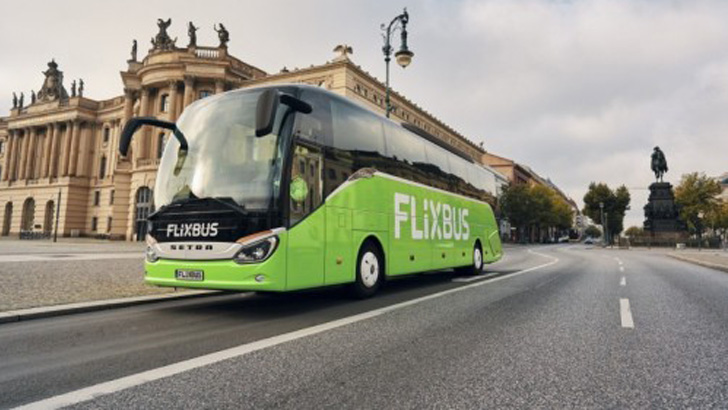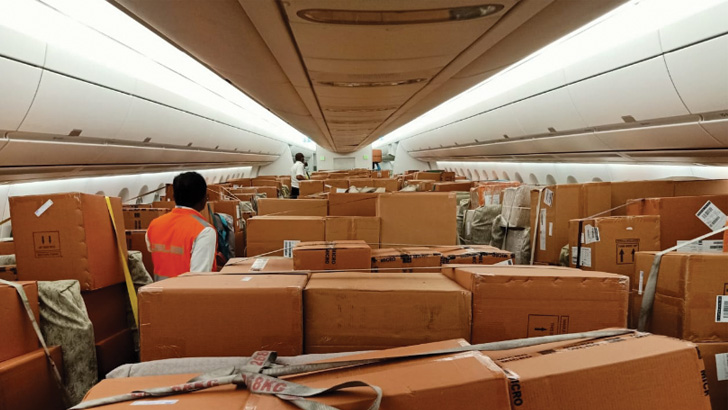Flixbus: Affordable and comfortable

Having been to Germany several times had always used their Deutsche Bahn trains, so when I heard of Flixbus from my Indian friends I thought why not give it a try. As I was visiting four countries I decided to give it a try and worked out various combinations to provide an honest review. – Long day trip, short day trip, a night journey with connecting services (as most companies don't guarantee connections), and an airport destination.
Flixbus has the largest network in Germany with its buses usually green in colour. Most buses typically stop near central (train) stations or central bus station ZOB (Zentraler Omnibus Bahnhof).
Flixbus is one of the best buses that I’ve experienced. Globally some buses are smelly, not well maintained, noisy, not so comfortable seats, many a times delayed, no inbuilt rest rooms etc. In contrast I found Flixbus super clean (bathrooms on one journey was not clean while on the double-decker it was). The bus always (surprisingly) reached all the destinations and stops a few minutes before time (I strongly suspect they keep a buffer time of 15 minutes). The WiFi worked pretty well on my mobile (can’t comment on laptop as I did not use).
The day journey buses were quite comfortable and I did not feel the strain and the excellent roads made the ride smooth. While I did take a nap I could relish the country side sights and greenery. An issue that I faced was communicating with the driver and his attendant – both did not understand English. I think this where the Flix team can put in more efforts to train them Basic English.
The overnight bus I took was from Berlin ZOB to Munich airport with a connection at Nuremberg at 8.15 am (my flight was at night). The bus left 10 minutes late from Berlin at 23:40 with one change at 05:15am at Nuremberg. The bus arrived at 5.10. The transfer time was one hour and the connecting bus came at exactly 06:15 and the driver was aware that I was going to board it (made me feel nice and comfortable) and then reaching at 08:10 into Munich Airport. On both the legs the bus wasn’t full so I had my next seat empty.
Being green the buses are easy to spot in a terminal. The Flixbus prices are pocket friendly and even for 10-15 euro one can travel a substantial distance - only book a bit in advance. But do note it costs extra to reserve a seat (around 2-3 euro). One can buy tickets directly from the driver prior to boarding but the prices will be extremely steep. Cancellations are relatively easy before departure of the bus. For the tech savvy the Flixbus app is easy to use and gives latest updates.
Finally Flix offers affordable travel by train (yet to experience FlixTrain but will do so when I again travel to Berlin for ITB) and bus to over 2,500 destinations in 36 countries offering 400,000 daily connections. They are also deeply committed to sustainability (as the green colour does reflect).
Share This Post
An hour to any destination

At the recently concluded 2020 China Space Conference in Fuzhou Bao Weimin, a senior official at China Aerospace Science and Technology Corp announced that by 2045 China space program will operate thousands of flights a year, carrying passengers (and cargo) to anywhere in the world within one hour.
He mentioned that hypersonic flying technology and reusable carrier rocket technology would be necessary to achieve the ambitious goal. The regular flights will include one-hour routes between global destinations, transportation between ground and orbit, and routes between orbits. China also plans to launch Taiji 2, a satellite to conduct in-orbit experiments on key technologies related to space-based gravitational wave detection, before 2024. China has taken steps in recent years to make space flights more economical and is trying to catch up with Russia and the United States to become a major space power by 2030.
Share This Post
Passenger aircraft make room for cargo

Coronavirus (covid-19) pandemic has already hit the hospitality industry badly and airlines are no exception. Several countries have banned air travel and an estimated 16,000+ passenger jets are grounded worldwide. But in tough times airlines do find solutions. Many airlines are now using their passenger aircraft for cargo flights. Ethiopian Airlines, which grounded many of its international passenger fleet is now using passenger planes for cargo shipments.
"On top of the regular cargo freighter service, using our passenger aircrafts for cargo, we are operating daily out of Mumbai, four times weekly out of New Delhi and two times weekly out of Bangalore, Chennai, Ahmedabad and once weekly from Hyderabad. We are endeavouring to connect India to Africa, Europe, US and Canada and the rest of the world, despite the challenges associated with COVID-19 global pandemic," said Tigist Eshetu, Regional Director, Indian Sub-continent Ethiopian Airlines.
Cargo services have been vital for the airline. The first cargo charter operation was launched to Nairobi in 1946 and since then Ethiopian Cargo & Logistics Services Service has been growing. Today Ethiopian Cargo & Logistics Services gives scheduled services as well as charter operations depending stretching its wing to Europe, Middle East, Africa and Asia.
Currently, Ethiopian Cargo & Logistics Services operates with the state-of-the -art cargo terminal that has a capacity of 1 million tons per annum and is the largest trans-shipment terminal in Africa. In the strategic road map of Ethiopian - Vision 2025, Ethiopian Cargo & Logistics Services envisions to be a full-fledged profit center with annual revenue of US$ 2 Billion, 19 dedicated aircraft, annual tonnage of 820,000, and 57 international destinations.
Share This Post
IATA: COVID-19 puts over half of 2020 airline passenger revenues at risk

As per International Air Transport Association (IATA) the COVID-19 crisis will see airline passenger revenues drop by $314 billion in 2020, a 55% decline compared to 2019.
On 24 March IATA estimated $252 billion in lost revenues (-44% vs. 2019) in a scenario with severe travel restrictions lasting three months. The updated figures reflect a significant deepening of the crisis since then, and reflect the following parameters:
- Severe domestic restrictions lasting three months
- Some restrictions on international travel extending beyond the initial three months
- Worldwide severe impact, including Africa and Latin America (which had a small presence of the disease and were expected to be less impacted in the March analysis).
Full-year passenger demand (domestic and international) is expected to be down 48% compared to 2019.The two main elements driving this are:
Overall Economic Developments: The world is heading for recession. The economic shock of the COVID-19 crisis is expected to be at its most severe in Q2 when GDP is expected to shrink by 6% (by comparison, GDP shrank by 2% at the height of the Global Financial Crisis). Passenger demand closely follows GDP progression. The impact of reduced economic activity in Q2 alone would result in an 8% fall in passenger demand in the third quarter.
Travel Restrictions: Travel restrictions will deepen the impact of recession on demand for travel. The most severe impact is expected to be in Q2. As of early April, the number of flights globally was down 80% compared to 2019 in large part owing to severe travel restrictions imposed by governments to fight the spread of the virus. Domestic markets could still see the start of an upturn in demand beginning in the third quarter in a first stage of lifting travel restrictions. International markets, however, will be slower to resume as it appears likely that governments will retain these travel restrictions longer.
“The industry’s outlook grows darker by the day. The scale of the crisis makes a sharp V-shaped recovery unlikely. Realistically, it will be a U-shaped recovery with domestic travel coming back faster than the international market. We could see more than half of passenger revenues disappear. That would be a $314 billion hit. Several governments have stepped up with new or expanded financial relief measures but the situation remains critical. Airlines could burn through $61 billion of cash reserves in the second quarter alone. That puts at risk 25 million jobs dependent on aviation. And without urgent relief, many airlines will not survive to lead the economic recovery,” said Alexandre de Juniac, IATA’s Director General and CEO.
Financial Relief
Governments must include aviation in stabilization packages. Airlines are at the core of a value chain that supports some 65.5 million jobs worldwide. Each of the 2.7 million airline jobs supports 24 more jobs in the economy.
IATA proposes a number of relief options for governments to consider, including:
- Direct financial support to passenger and cargo carriers to compensate for reduced revenues and liquidity attributable to travel restrictions imposed as a result of COVID-19.
- Loans, loan guarantees and support for the corporate bond market by governments or central banks. The corporate bond market is a vital source of finance for airlines, but the eligibility of corporate bonds for central bank support needs to be extended and guaranteed by governments to provide access for a wider range of companies.
- Tax relief: Rebates on payroll taxes paid to date in 2020 and/or an extension of payment terms for the rest of 2020, along with a temporary waiver of ticket taxes and other government-imposed levies.
Share This Post


















